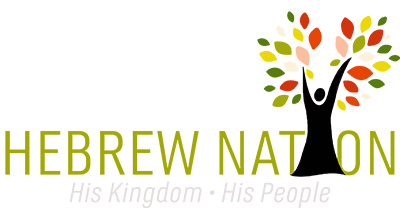This week, the review of the news seems to fit a pretty clear pattern: "WARNINGS: Dated, Certain, and UN-certain"
Recent Podcasts
“Come out of her, My people” Show ~ Mark Call weekly
Mark Call welcomes author and torah teacher Pete Rambo of natsab.com this week for a discussion of what might be called "Barriers to Torah." We know we are told to "come out of her." We understand that so much of what we have been taught is SUPPOSED to be "church...
Mark Call – Daily News Update Thursday
News and commentary for Thursday, 5 September, 2024.
Mark Call – Daily News Update Wednesday
News and commentary for Wednesday, 4 September, 2024.
Image Bearers Radio Ep. 159- What Do You Want? (Part 31)
How do we get our lives unstuck? Is belief alone the thing that gets our lives moving and producing the kind of fruit we & God desire? How do we actualize the idealized version of ourselves? In this series, we are seeking to answer the question Yeshua asked His...
Image Bearers Radio Ep. 158- What Do You Want? (Part 30)
How do we get our lives unstuck? Is belief alone the thing that gets our lives moving and producing the kind of fruit we & God desire? How do we actualize the idealized version of ourselves? In this series, we are seeking to answer the question Yeshua asked His...
Mark Call – Daily News Update Tuesday
News and commentary for Tuesday, 3 September, 2024.
Now Is The Time with Rabbi Steve Berkson | Honor & Shame | Part 6
What better way is there to give honor to the Father than to follow in the steps of our teacher Messiah Yeshua and become one in every way with the Father. In this teaching, Rabbi Steve Berkson continues where we left off in John 17 where we find Yeshua praying for...
Mark Call – Parsha “Re-eh” teaching from Shabbat Shalom Mesa
Parsha "Re'eh," (Devarim or Deuteronomy 11:26-16:17) begins with the word rendered "See!" - or, BEHOLD!" And what follows is what Mark Call of Shabbat Shalom Mesa fellowship calls a "Capsule Synopsis why WHY the Whore Church is STILL in Exile." The Erev Shabbat...
Calming Harp Episode #188
In this time of great political divide, friends are leaving friends, and this is a sad state of affairs. In Psalm 55, David speaks of a friend that he used to have sweet fellowship with who turned on him and became an enemy. How does this happen? Yashua/Jesus told us...
Torah Teachers’ Round Table – Tanakh Edition – Isaiah chapter 44
The Torah teachers complete the look at the Book of the prophet Isaiah/YesheYahu, chapter 44.
Mark Call – Daily News Update Friday
News, commentary, and a lot of 'dot-connecting' for the week ending Saturday, 31 August, 2024. This was one of those weeks where "decades happen." Which includes a lot of Big Lies not only revealed, but blown wide open. Which means the Deep State has a problem. And...









